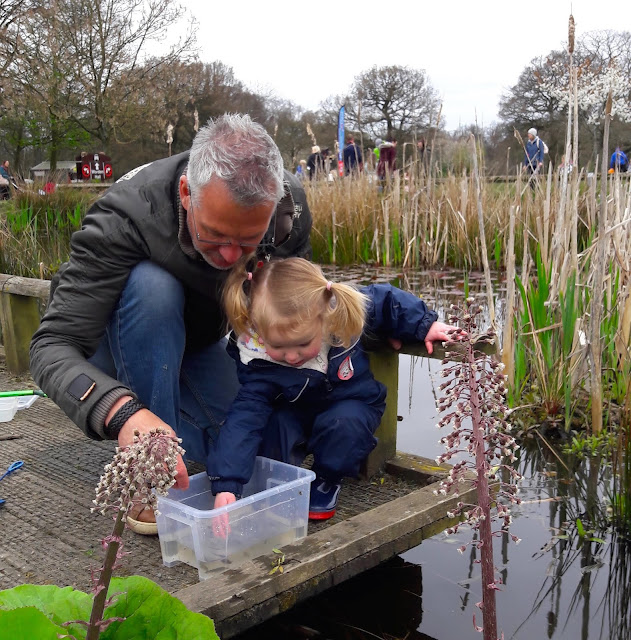Guest Blogger: Andrew Gray —Admiring views across the pond
It’s my privilege to post on the Amphibian Foundation's frogblog and to offer any support I can for the amazing work of Mark Mandica, who’s level of commitment to amphibian conservation I greatly admire. I have known Mark for over 5 years now and the more I know of this man the more impressed I am with all he does. Establishing AF, and all the associated amphibian conservation, teaching and engagement work, is a real credit to him and such an incredible achievement.
Although much of Mark’s great conservation work focuses on native US species, I also know that he has a real passion for tropical species. It is through this shared interest that we first met and particularly with regards neotropical tree frogs. Much our outreach and engagement work with the younger generation here in Manchester involves getting them outdoors to generate interest in the natural world.
Related Links:
'Inspired by Nature' - Manchester Museum environmental education outreach at Brockholes
nature reserve in collaboration with Inspire Youth Zone in Chorley, Lancashire.
Film produced by
Katie Garrett. (c) University of Manchester, England,
UK.
National Geographic - He spent his career studying a frog, then he discovered its true identity
However, we have relatively few native amphibians here in the UK compared to the US so we also use many interesting and rare tropical species to fully inspire young people about this incredible group of animals
Related Links:
Having specific tropical species also opens up many opportunity to extend our commitment to highlighting important global conservation issues, including threats to rainforest biodiversity, wildlife habitat protection, sustainability and community engagement.
 |
| Children from the local community at the Harlequin frog environmental education workshop at the school in Santa Fe, Panama. |
Related Link:
https://www.museum.manchester.
I am mainly a tropical field biologist and conservationist, known mostly for my work with neotropical tree frogs and some bufonids. For more than 30 years I have been associated with phyllomedusine species through research, education, filming, and conservation work. I have previously served on the steering group of Amphibian Ark and am now honoured to have been invited onto the Scientific Advisory Board of the Amphibian Foundation.
https://www.museum.manchester.
I am mainly a tropical field biologist and conservationist, known mostly for my work with neotropical tree frogs and some bufonids. For more than 30 years I have been associated with phyllomedusine species through research, education, filming, and conservation work. I have previously served on the steering group of Amphibian Ark and am now honoured to have been invited onto the Scientific Advisory Board of the Amphibian Foundation.
 |
| Cruziohyla craspedopus specimen at Manchester Museum, kindly provided by Mark when it was a tadpole after being captive-bred by him. |
Amphibian Foundation Neotropical Captive Propagation
Gray, 2018. Review of the genus Cruziohyla (Anura:Phyllomedusidae), with description of a new species
I know recently Mark, supported by Anthony and Crystal, have been putting such a lot of effort into completing their new state of the art tropical rainchamber, which will allow AF to really maximise their capacity for keeping and breeding tropical and sub-tropical species. Its an incredible piece of work - when you know what has gone into creating this, and, matched with Mark’s experience and skills in breeding tropical species, what amazing new opportunities it will bring, it is truly fantastic. It is also an amazing piece of living Art. The tropical rainchamber has officially opened on August 15th and I and all in the Vivarium at Manchester Museum send all our best wishes to the team at AF for a wonderfully successful event!
______________________________
For more information on Andrew's work at the Vivarium at the Manchester Museum, visit the site here: https://www.museum.manchester.





Comments
Post a Comment